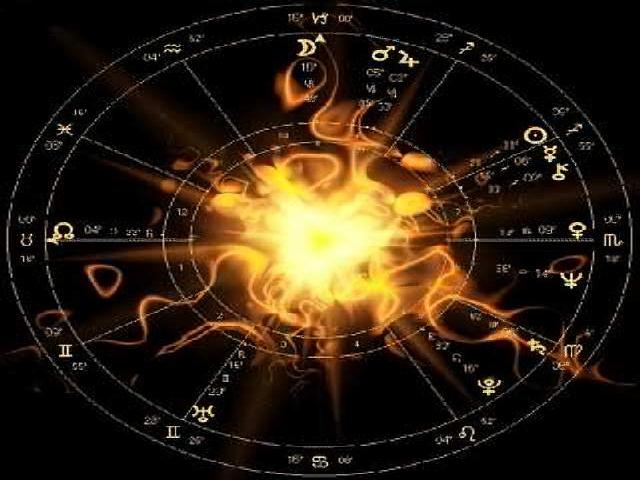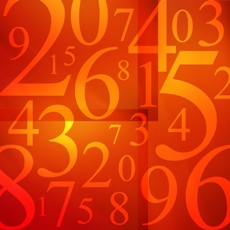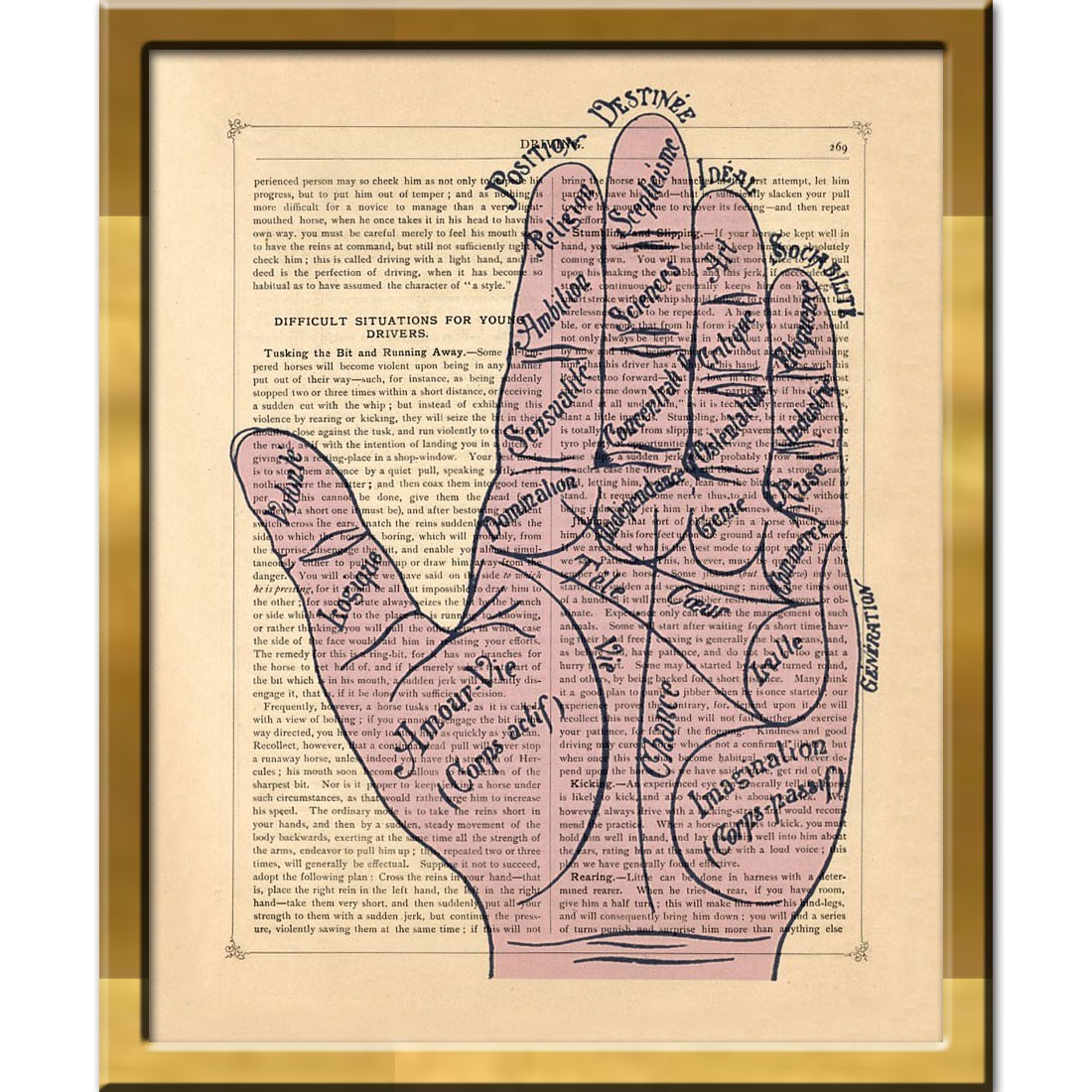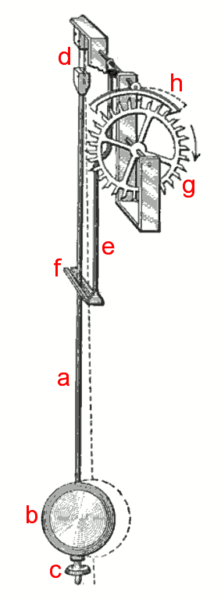





Astrology is a group of systems, traditions, and beliefs which hold that the relative positions of celestial bodies (the Sun, Moon, and planets) and related details can provide information about personality, human affairs and other "earthly" matters. A practitioner of astrology is called an astrologer. Astrologers generally believe that the movements and positions of celestial bodies can inform them about events experienced on a human scale or that predictions can be made from them. Many astrologers see astrology as being a purely symbolic language whereas others see the movements and positions of celestial bodies as influencing human and mundane affairs, either causally or otherwise. Despite differences in definitions, a common assumption of astrologers is that celestial placements can aid in the interpretation of past and present events, and in the prediction of the future.
Astrology is considered a pseudoscience or superstition by the scientific community, which sees a lack of statistically significant astrological predictions, while psychology explains much of the continued faith in astrology as a matter of cognitive biases. In 2006 the U.S. National Science Board published a statement which said it considers belief in ten survey items, astrology among them, to be "pseudoscientific".
Numerous traditions and applications employing astrological concepts have arisen since its earliest recorded beginnings in the 3rd millennium BC. Astrology has played an important role in the shaping of culture, early astronomy, the Vedas, and various disciplines throughout history. In fact, astrology and astronomy were often regarded as synonyms before the modern era, with the desire for predictive and divinatory knowledge one of the motivating factors for astronomical observation. Astronomy began to diverge from astrology after a period of gradual separation from the Renaissance up until the 18th century. Eventually, astronomy distinguished itself as the empirical study of astronomical objects and phenomena.
The word "astrology" comes from the Latin term astrologia ("astronomy"), which in turn derives from the Greek noun astron ("constellation" or "celestial body") and -????a, -logia ("the study of"). The word "starcraft" has also traditionally been used to mean astrology.
Astrology is considered a pseudoscience or superstition by the scientific community, which sees a lack of statistically significant astrological predictions, while psychology explains much of the continued faith in astrology as a matter of cognitive biases. In 2006 the U.S. National Science Board published a statement which said it considers belief in ten survey items, astrology among them, to be "pseudoscientific".
Numerous traditions and applications employing astrological concepts have arisen since its earliest recorded beginnings in the 3rd millennium BC. Astrology has played an important role in the shaping of culture, early astronomy, the Vedas, and various disciplines throughout history. In fact, astrology and astronomy were often regarded as synonyms before the modern era, with the desire for predictive and divinatory knowledge one of the motivating factors for astronomical observation. Astronomy began to diverge from astrology after a period of gradual separation from the Renaissance up until the 18th century. Eventually, astronomy distinguished itself as the empirical study of astronomical objects and phenomena.
The word "astrology" comes from the Latin term astrologia ("astronomy"), which in turn derives from the Greek noun astron ("constellation" or "celestial body") and -????a, -logia ("the study of"). The word "starcraft" has also traditionally been used to mean astrology.
Palmistry is the art of characterization and foretelling the future through the study of the palm, also known as palm reading, or chorology? The practice is found all over the world, with numerous cultural variations. Those who practice chiromancy are generally called palmists, palm readers, hand readers, hand analysts, or chorologists.
Palmistry can trace its roots back to India in (Hindu) Astrology (known in Sanskrit as Jyotish), Chinese Yijing (I Ching), and Roma (gypsy) fortune tellers. The Hindu sage Valmiki is thought to have written a book, whose title translates in English as "The Teachings of Valmiki Maharishi on Male Palmistry", comprising 567 stanzas. From India, the art of palmistry spread to China, Tibet, Egypt, and Persia and to other countries in Europe from China, palmistry progressed to Greece where Anaxagoras practiced it. However, modern palmists often combine traditional predictive techniques with psychology, holistic healing, and alternative methods of divination also .
Palmistry Consists of the practice of evaluating a person's character or future life by "reading" the palm of that person's hand. Various "lines" ("heart line", "life line", etc.) and "mounts" (or bumps) (chirognomy), purportedly suggest interpretations by their relative sizes, qualities, and intersections. In some traditions, readers also examine characteristics of the fingers, fingernails, fingerprints and palmer skin patterns (dermatoglyphics), skin texture and color, shape of the palm, and flexibility of the hand.
A reader usually begins by reading the person's 'dominant hand' (the hand he or she writes with or uses the most) (sometimes considered to represent the conscious mind, whereas the other hand is subconscious). In some traditions of palmistry, the other hand is believed to carry hereditary or family traits, or, depending on the palmist's cosmological beliefs, to convey information about past-life or karmic conditions.
Palmistry can trace its roots back to India in (Hindu) Astrology (known in Sanskrit as Jyotish), Chinese Yijing (I Ching), and Roma (gypsy) fortune tellers. The Hindu sage Valmiki is thought to have written a book, whose title translates in English as "The Teachings of Valmiki Maharishi on Male Palmistry", comprising 567 stanzas. From India, the art of palmistry spread to China, Tibet, Egypt, and Persia and to other countries in Europe from China, palmistry progressed to Greece where Anaxagoras practiced it. However, modern palmists often combine traditional predictive techniques with psychology, holistic healing, and alternative methods of divination also .
Palmistry Consists of the practice of evaluating a person's character or future life by "reading" the palm of that person's hand. Various "lines" ("heart line", "life line", etc.) and "mounts" (or bumps) (chirognomy), purportedly suggest interpretations by their relative sizes, qualities, and intersections. In some traditions, readers also examine characteristics of the fingers, fingernails, fingerprints and palmer skin patterns (dermatoglyphics), skin texture and color, shape of the palm, and flexibility of the hand.
A reader usually begins by reading the person's 'dominant hand' (the hand he or she writes with or uses the most) (sometimes considered to represent the conscious mind, whereas the other hand is subconscious). In some traditions of palmistry, the other hand is believed to carry hereditary or family traits, or, depending on the palmist's cosmological beliefs, to convey information about past-life or karmic conditions.
Numerology is any of many systems, traditions or beliefs in a mystical or esoteric relationship between numbers and physical objects or living things. Numerology and numerological divination by systems such as isopsephy were popular among early mathematicians, such as Pythagoras, but are no longer considered part of mathematics and are regarded as pseudo mathematics by modern scientists. This is similar to the historical relationships between astrology and astronomy, and between alchemy and chemistry.
Today, numerology is often associated with the occult, alongside astrology and similar divinatory arts
Modern numerology often contains aspects of a variety of ancient cultures and teachers, including Babylonia, Pythagoras and his followers (Greece, 6th century B.C.), astrological philosophy from Hellenistic Alexandria, early Christian mysticism, early Gnostics, the Hebrew system of the Kabala, The Indian Vedas, the Chinese "Circle of the Dead", Egyptian "Book of the Masters of the Secret House" (Ritual of the Dead). Pythagoras and other philosophers of the time believed that because mathematical concepts were more "practical" (easier to regulate and classify) than physical ones, they had greater actuality.
St. Augustine of Hippo (A.D. 354-430) wrote "Numbers are the Universal language offered by the deity to humans as confirmation of the truth." Similar to Pythagoras, he too believed that everything had numerical relationships and it was up to the mind to seek and investigate the secrets of these relationships or have them revealed by divine grace. See Numerology and the Church Fathers for early Christian views. However, that does not mean that Pythagoras had coined himself the system one calls numerology. Pythagoras had only paved the way to the observation of numbers as archetypes rather than mere numerals.
Today, numerology is often associated with the occult, alongside astrology and similar divinatory arts
Modern numerology often contains aspects of a variety of ancient cultures and teachers, including Babylonia, Pythagoras and his followers (Greece, 6th century B.C.), astrological philosophy from Hellenistic Alexandria, early Christian mysticism, early Gnostics, the Hebrew system of the Kabala, The Indian Vedas, the Chinese "Circle of the Dead", Egyptian "Book of the Masters of the Secret House" (Ritual of the Dead). Pythagoras and other philosophers of the time believed that because mathematical concepts were more "practical" (easier to regulate and classify) than physical ones, they had greater actuality.
St. Augustine of Hippo (A.D. 354-430) wrote "Numbers are the Universal language offered by the deity to humans as confirmation of the truth." Similar to Pythagoras, he too believed that everything had numerical relationships and it was up to the mind to seek and investigate the secrets of these relationships or have them revealed by divine grace. See Numerology and the Church Fathers for early Christian views. However, that does not mean that Pythagoras had coined himself the system one calls numerology. Pythagoras had only paved the way to the observation of numbers as archetypes rather than mere numerals.
Pendulum is a weight suspended from a pivot so that it can swing freely.
When a pendulum is displaced from its resting equilibrium position, it is subject to a restoring force due to gravity that will accelerate it back toward the equilibrium position. When released, the restoring force combined with the pendulum's mass causes it to oscillate about the equilibrium position, swinging back and forth. The time for one complete cycle, a left swing and a right swing, is called the period. A pendulum swings with a specific period which depends (mainly) on its length. From its discovery around 1602 by Galileo Galilee the regular motion of pendulums was used for timekeeping, and was the world's most accurate timekeeping technology until the 1930s. Pendulums are used to regulate pendulum clocks, and are used in scientific instruments such as accelerometers and seismometers. Historically they were used as gravimeters to measure the acceleration of gravity in geophysical surveys, and even as a standard of length. The word 'pendulum' is new Latin, from the Latin pendulous, meaning 'hanging'.
The simple gravity pendulum is an idealized mathematical model of a pendulum. This is a weight (or bob) on the end of a mass less cord suspended from a pivot, without friction. When given an initial push, it will swing back and forth at constant amplitude. Real pendulums are subject to friction and air drag, so the amplitude of their swings declines.
Using the basic principle of the pendulum, the weight (bob) is replaced by an axe head. The victim is strapped to a table below, the device is activated, and the axe begins to swing back and forth through the air. With each pass, or return, the pendulum drops, gradually coming closer to the victim's torso, until finally cleaved. Because of the time required before the mortal action of the axe is complete, the pendulum is considered a method of torturing the victim before his or her demise?
When a pendulum is displaced from its resting equilibrium position, it is subject to a restoring force due to gravity that will accelerate it back toward the equilibrium position. When released, the restoring force combined with the pendulum's mass causes it to oscillate about the equilibrium position, swinging back and forth. The time for one complete cycle, a left swing and a right swing, is called the period. A pendulum swings with a specific period which depends (mainly) on its length. From its discovery around 1602 by Galileo Galilee the regular motion of pendulums was used for timekeeping, and was the world's most accurate timekeeping technology until the 1930s. Pendulums are used to regulate pendulum clocks, and are used in scientific instruments such as accelerometers and seismometers. Historically they were used as gravimeters to measure the acceleration of gravity in geophysical surveys, and even as a standard of length. The word 'pendulum' is new Latin, from the Latin pendulous, meaning 'hanging'.
The simple gravity pendulum is an idealized mathematical model of a pendulum. This is a weight (or bob) on the end of a mass less cord suspended from a pivot, without friction. When given an initial push, it will swing back and forth at constant amplitude. Real pendulums are subject to friction and air drag, so the amplitude of their swings declines.
Using the basic principle of the pendulum, the weight (bob) is replaced by an axe head. The victim is strapped to a table below, the device is activated, and the axe begins to swing back and forth through the air. With each pass, or return, the pendulum drops, gradually coming closer to the victim's torso, until finally cleaved. Because of the time required before the mortal action of the axe is complete, the pendulum is considered a method of torturing the victim before his or her demise?
The term mind reading can be used to refer to two fairly disparate things: the effect of mentalist and an actual communication between two minds. The first is a well-documented performance art with an established history and system by which it is accomplished. The second is prescience, and is therefore treated with a great deal of skepticism by the mainstream scientific community. Nonetheless, mind reading telepathy remains a very popular belief among many people throughout the world.
Mind reading by using mentalist tricks is meant to convey the impression of actual telepathy, but it is actually accomplished by taking advantage of well-understood principles, including cold, warm, and hot readings, and some basic stage principles. Mentalists have been performing mind reading tricks since ancient history, with recorded shows as far back as the 16th century. Early mentalists truly purported to possess telepathic skills, and indeed some may have actually believed they had these powers, but many modern mentalists if pressed will acknowledge that what they are doing is a mentalist performance, and not an actual par psychological phenomenon.
Mentalists may perform all sorts of different mind reading tricks, to show that they are able to read minds. One of the most famous of these is known as the book test. In the book test, a book is taken at random, and given to a member of the audience. The member is then asked to open the book to a random page, and select a random word. The mentalist then appears to read the audience memberís mind by saying the word they had chosen. Although effects like this appear to be clear cut cases of mind reading, they are actually the result of a fairly ornate system of reading techniques, which have in recent years been codified into cohesive structures by mentalists like Darren Brown.
Mind reading by using mentalist tricks is meant to convey the impression of actual telepathy, but it is actually accomplished by taking advantage of well-understood principles, including cold, warm, and hot readings, and some basic stage principles. Mentalists have been performing mind reading tricks since ancient history, with recorded shows as far back as the 16th century. Early mentalists truly purported to possess telepathic skills, and indeed some may have actually believed they had these powers, but many modern mentalists if pressed will acknowledge that what they are doing is a mentalist performance, and not an actual par psychological phenomenon.
Mentalists may perform all sorts of different mind reading tricks, to show that they are able to read minds. One of the most famous of these is known as the book test. In the book test, a book is taken at random, and given to a member of the audience. The member is then asked to open the book to a random page, and select a random word. The mentalist then appears to read the audience memberís mind by saying the word they had chosen. Although effects like this appear to be clear cut cases of mind reading, they are actually the result of a fairly ornate system of reading techniques, which have in recent years been codified into cohesive structures by mentalists like Darren Brown.


Some physical diseases are believed to have a mental component derived from the stresses and strains of everyday living. This is the case, for example, of lower back pain and high blood pressure, which appear to be partly related to stresses in everyday life. Psychiatry has found it difficult until relatively recently to distinguish somatoform disorders, disorders in which mental factors are the sole cause of a physical illness, from psychosomatic disorders, disorders in which mental factors play a significant role in the development, expression, or resolution of a physical illness.
For instance, while peptic ulcer was once thought of as being purely caused by stress, later research revealed that Helicobacter pylori caused 80% of ulcers. However 4 out of 5 people infected with Helicobacter pylori do not develop ulcers, and an expert panel convened by the Academy of Behavioral Medicine Research concluded that ulcers are not merely an infectious disease and that mental factors do play a significant role. One likelihood is that stress diverts energy away from the immune system, thereby stress promotes Helicobacter pylori infection in the body.
It is still difficult to classify some disorders as purely physical, mixed psychosomatic, or purely somatoform. One example is Irritable Bowel Syndrome (IBS) that was considered formerly as having purely mental causes, while subsequent research showed significant differences in the behaviour of the gut in IBS patients. On the other hand, there are no actual structural changes in IBS patients and research shows that stress and emotions are still significant factors in causing IBS.
However, while it is necessary to identify if an illness has a physical basis, it is recognized more and more that the effort to identify disorders as purely physical or mixed psychosomatic is increasingly obsolete as almost all physical illness have mental factors that determine their onset, presentation, maintenance, susceptibility to treatment, and resolution. Addressing such factors is the remit of the applied field of behavioral medicine. In modern society, psychosomatic aspects of illness are often attributed to stress making the remediation of stress one important factor in the development, treatment, and prevention of psychosomatic illness.
For instance, while peptic ulcer was once thought of as being purely caused by stress, later research revealed that Helicobacter pylori caused 80% of ulcers. However 4 out of 5 people infected with Helicobacter pylori do not develop ulcers, and an expert panel convened by the Academy of Behavioral Medicine Research concluded that ulcers are not merely an infectious disease and that mental factors do play a significant role. One likelihood is that stress diverts energy away from the immune system, thereby stress promotes Helicobacter pylori infection in the body.
It is still difficult to classify some disorders as purely physical, mixed psychosomatic, or purely somatoform. One example is Irritable Bowel Syndrome (IBS) that was considered formerly as having purely mental causes, while subsequent research showed significant differences in the behaviour of the gut in IBS patients. On the other hand, there are no actual structural changes in IBS patients and research shows that stress and emotions are still significant factors in causing IBS.
However, while it is necessary to identify if an illness has a physical basis, it is recognized more and more that the effort to identify disorders as purely physical or mixed psychosomatic is increasingly obsolete as almost all physical illness have mental factors that determine their onset, presentation, maintenance, susceptibility to treatment, and resolution. Addressing such factors is the remit of the applied field of behavioral medicine. In modern society, psychosomatic aspects of illness are often attributed to stress making the remediation of stress one important factor in the development, treatment, and prevention of psychosomatic illness.





- Home
- Esoteric
- Environmental Awareness
- Ashram
- Lotus Water Lily
- Rose
- Rare Herbal Plants
- Child & Women Empowerment
- Services
- New & Renewable Energy
- Video Gallery
- Members
- Contact Us
